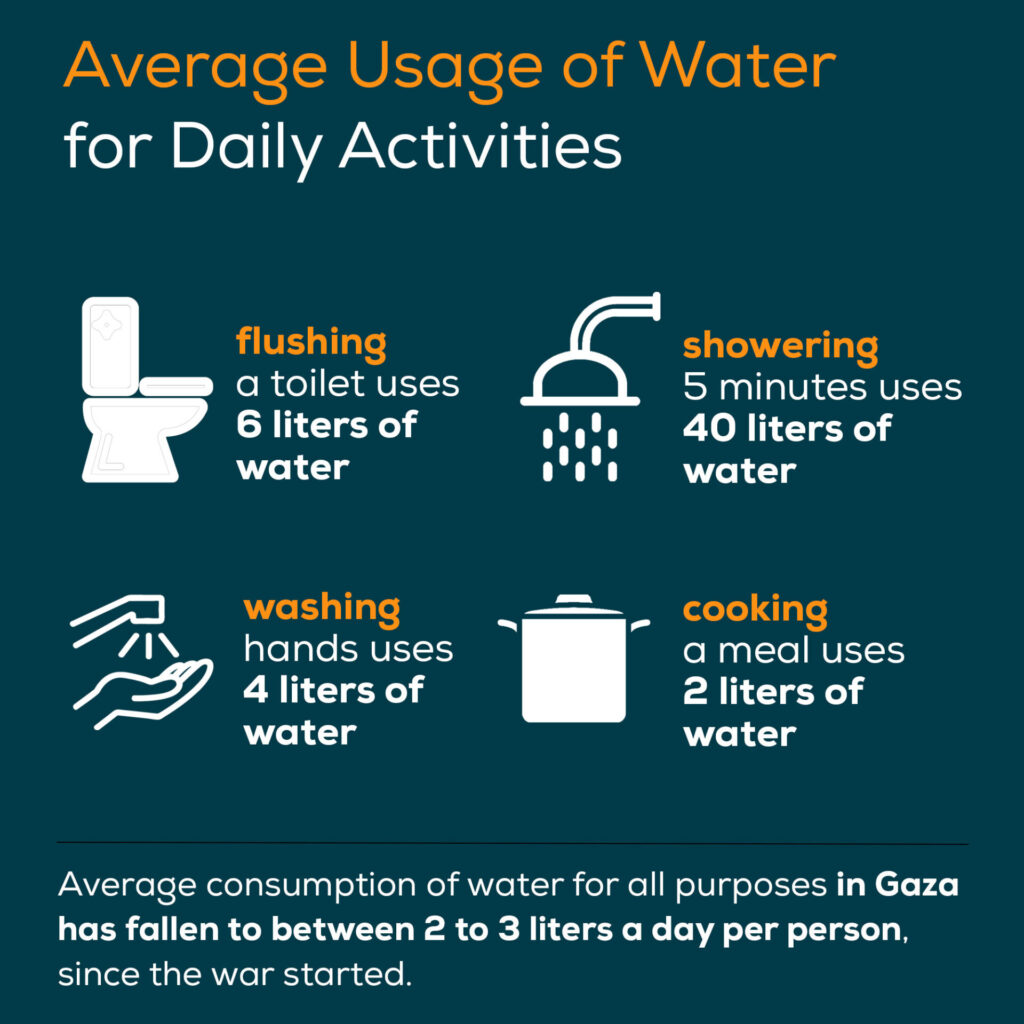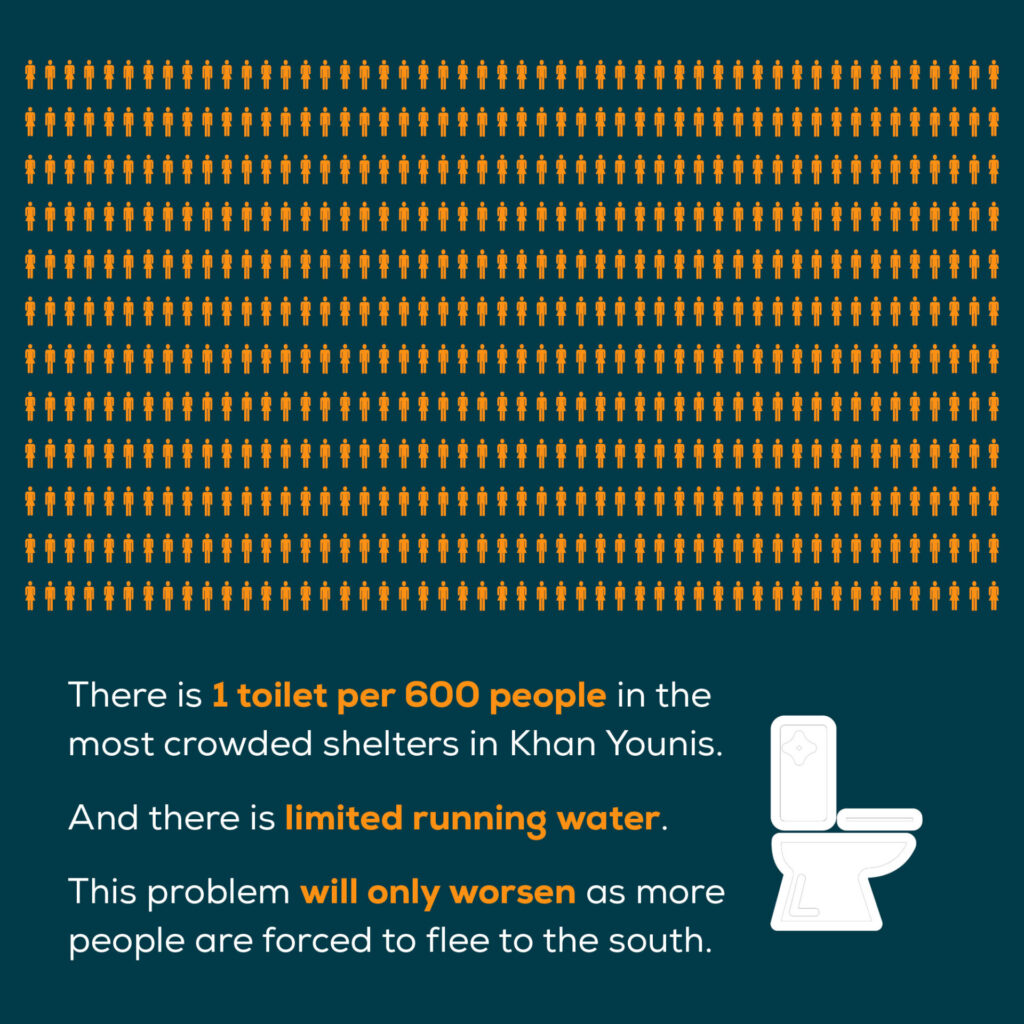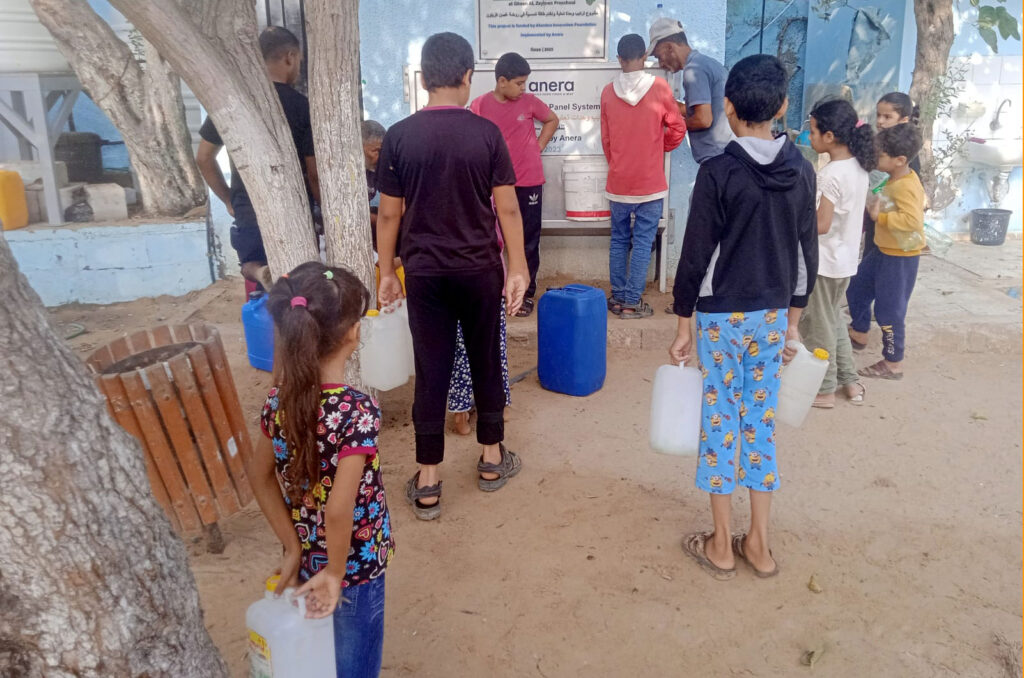Gaza’s Water Crisis Puts Thousands at Risk of Preventable Death
The water situation in Gaza is catastrophic. Even before the war, Gaza had virtually no potable water. The population relied on a polluted and rapidly depleting aquifer, as well as a limited number of desalination plants that fell far short of meeting local needs. This has led to the alarming statistic that 97% of Gaza’s water is unfit for human consumption.
Before the war, Palestinians in the West Bank and Gaza had access to just 80 liters of water per day, falling below the international standard of 100 liters set by the World Health Organization. Since the start of the war, the average consumption of water for all purposes in Gaza has fallen to between two and three liters a day per person. And most of this water isn’t clean or safe to drink.
To put this into perspective, flushing an efficient toilet once uses around six liters of water, washing hands properly takes nearly four liters of water each time, a five-minute shower uses nearly 40 liters of water and cooking typically takes at least two liters of water a day.


Three liters is the bare minimum amount of water a person needs to drink in order to avoid health problems related to dehydration, including organ damage and failure!
The people of Gaza are resorting to consuming brackish water contaminated with seawater, while remaining water sources are tainted with rising levels of sewage due to the collapse of the wastewater network, caused by fuel shortages and Israeli airstrikes.. Some of the most common symptoms of illnesses from contaminated water include abdominal pain, fever, nausea, vomiting, and diarrhea. Children are most vulnerable to these kinds of illnesses.
Communicable diseases are on the rise, due to water scarcity, overcrowding a healthcare sector on the brink of collapse. In some of the most overcrowded shelters in the south there is one toilet per 600 internally displaced persons, and little to no running water.


For the first two weeks of the war, there was a total blockade on Gaza, with nothing at all entering the territory. Since October 21, when external aid was finally allowed into Gaza, only 650 trucks have come through the border – which is just above the number of trucks entering into Gaza every workday before the war. None of these trucks so far has brought in the fuel needed to power Gaza’s water networks and keep healthcare centers and hospitals operational.
Instead, some of the trucks have shipped bottled water and jerry cans across the border. The water that has come in so far only meets the needs of somewhere between 15,000-66,000 people each day, or 0.6 – 2.6% of Gaza’s population. And this aid has been limited to the south. It’s like putting a bandaid on an amputated limb.
In the meantime, ongoing airstrikes continue damaging critical water infrastructure. Between November 4th and 5th alone, bombs hit seven water facilities across Gaza, including reservoirs in Gaza City, Jabalia refugee camp and Rafah – which is located in the “safe” zone where people have been forcibly displaced. And, while some water wells and desalination plants in southern Gaza have remained operational in some capacity, the depletion of fuel stocks continues to shut down or curtail services. If facilities don’t have fuel to run, it is only a matter of time before they all are forced to shut down
Two pipelines from Israel remain operational – both in the south “safe” zone – but UNOCHA is reporting serious leakage issues. One is leaking 70% of the water.
Trucking remains the primary method of distribution of water across Gaza but it is becoming more and more difficult as roads are destroyed and fuel runs out.


Let’s Get Water to the People of Gaza
We urgently call for the immediate inclusion of substantial fuel supplies in the aid shipments to Gaza, ensuring access to clean drinking water and averting the dire consequences for sanitation. Restoration of water networks and electricity is imperative. The international community must act decisively to halt the bombings and swiftly address the devastation inflicted upon lives and infrastructure. Time is of the essence, and we call for immediate, concerted action to alleviate the suffering and protect the lives of people in Gaza.
Should the situation in Gaza be allowed to continue unabated, thousands of more people will die of preventable disease and distress. These innocent victims will not appear on the official death tolls that count those killed by the most overt violence caused by airstrikes. But they should be.
[Our source for statistics in this post is UNOCHA.]
OUR BLOG
Related
Part of a series on the impact of the war on all sectors of economic life within Gaza, Anera’s immediate response and plans for the future. Other posts cover housing, education, WASH, health and food production systems. Livelihood Recovery In Gaza, 57 years of occupation and…
InterAction and 50 Member CEOs, some of whom have organizations that work in Gaza, urge President Biden to take decisive and actionable steps to alleviate the humanitarian crisis in Gaza. Detailed within this letter are specific steps and commitments that…
